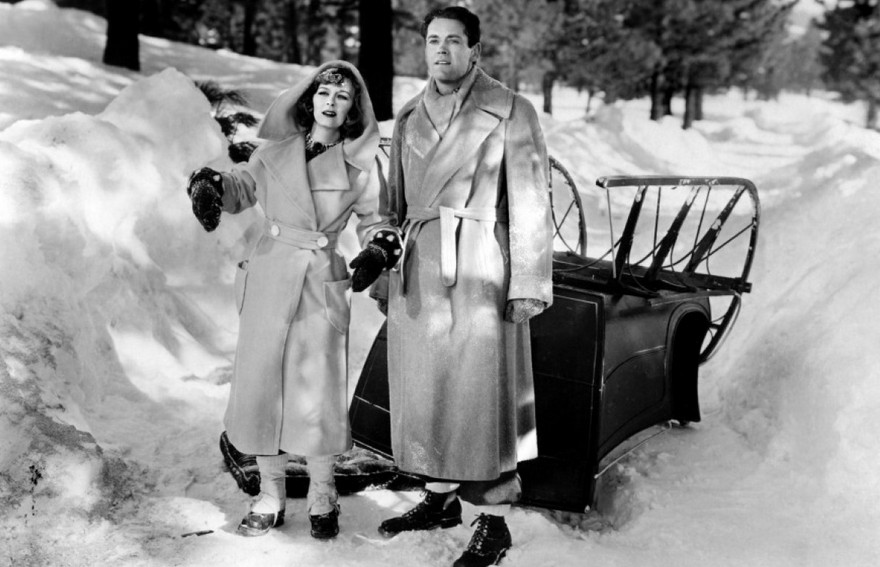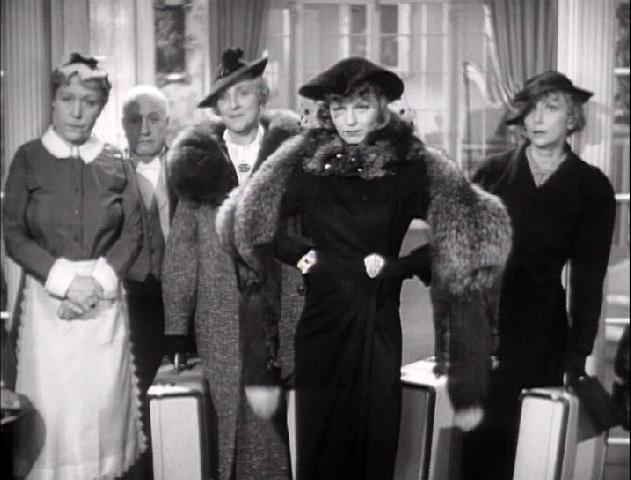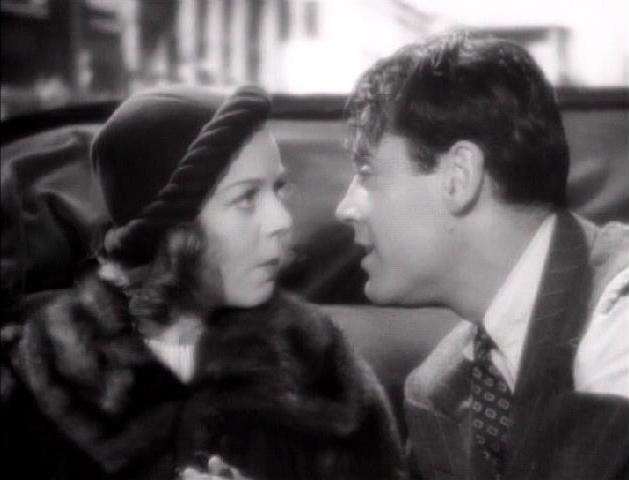Chances are excellent that only a handful of people reading this have ever even heard of The Moon’s Our Home, let alone seen it. I think I saw it on AMC 20-plus years ago when AMC still showed movies and were commercial free. It only recently became commercially available — and judging by the look of it — the image is soft and sometimes unstable — I’d say there’s a good chance it was taken from a 16mm print in less than pristine condition. (Because most of the Paramount holdings from 1928 through 1949 were sold in a block to MCA — now Universal — in 1958 for TV, the interest was in 16mm more than 35mm. The result of this? A lot of these titles only exist today on 16mm.) Oh, it’s certainly watchable, but you can definitely tell it’s just not what it must have looked like in 1936. Fortunately, The Moon’s Our Home is sufficiently fun and funny that it’s easy to forget that the copy isn’t all it might be.
The premise of battling lovers and mistaken identies was, of course, nothing new even then. The volatile nature of the relationship between Cherry Chester and Anthony Amberton owes more than a little to Twentieth Century (1934) — and, in fact, part of this film takes place on a train. But screwball comedies aren’t known for their plots anyway. Rather, we remember them for their witty — often preposterous — dialogue, convoluted complications, and a solid dose of slapstick. To that mix here we may add a startling degree of physical violence — to a degree that makes the theatrical hijinks of John Barrymore and Carole Lombard seem almost tame. And it’s a little hard not to think of Margaret Sullavan’s later mental problems when looking at her tantrums and the inclusion of her being strapped into a strait-jacket at one point. Considering that Henry Fonda supposedly remarked that the onscreen fights with ex-wife Sullavan were like “old home week,” one wonders how true to life the film is.
The basic set-up of having Sullavan’s movie star — who’s really more cheesed over a bunch of fans abadonning her to hound Fonda’s famous travel book author — and said writer hate each other sight unseen is amusingly handled. The author objecting to the possibility of the existence of anyone named Cherry Chester is soon followed by his assertion, “Marshmallow-faced movie stars make me sick. Give me the simple primitive woman with a small high chest.” (This dream woman with the “small high chest” becomes something of a mantra.) Of course, Sullavan’s movie star sees a picture of the author with a camel on a book jacket and finally decides he must be the one wearing a hat. Things change when they actually meet — she mistakes him for a thief because of the fans chasing him — under their real names.
What follows hardly reinvents the genre, but it certainly does right by it. The whole film is blessed by the smooth direction of William A. Seiter — a filmmaker little known, despite helming a number of classic movies, including what are generally considered Laurel and Hardy’s and Wheeler and Woolsey’s best film. There’s a marvelous segment using a shaved set that allows us to watch Sullavan and Fonda in their respective train compartments. Yes, it’s probably indicated in the screenplay, but the almost balletic actions of the stars belong to him.
And then there are the wonderful supporting players — Charles Butterworth as Sullavan’s would-be suitor, Henrietta Crosman as her tyranical grandmother, Beulah Bondi as her put-upon personal assistant, Walter Brennan as a “little bit deaf” taxi driver and justice of the peace — and they’re a huge plus. In fact, Beulah Bondi’s last line may well be the funniest thing in the movie. I hate to trot out this idea — it’s too close to the moronic “they don’t make ’em like they used to” — but this is the type of film it would be hard to put together today, not in the least because of our current lack of this kind of supporting actors. See it.








For me, what I didn’t stumble upon by age 13 or so (which included TWENTIETH CENTURY) I found through film studies. Hawks, Wilder, Sturges, even Mitchell Leisen received their due. Not Seiter and certainly not this title. Your review makes me determined to see this film. And I would agree with the conclusion you don’t wish to reach that changing fashions and mores make this particular brew impossible to replicate with the same taste as yesteryear.
The closest I’ve seen to coming up with anything like it was Miss Pettigrew Lives for a Day (2008). Really, I suspect the only reason I was familiar with this title was that my mother signed me up for the book club editions of the Citadel “Films of” books when I was about 14 and there was eventually a Films of Henry Fonda. There was probably a gap of 40 years between reading about and seeing it.